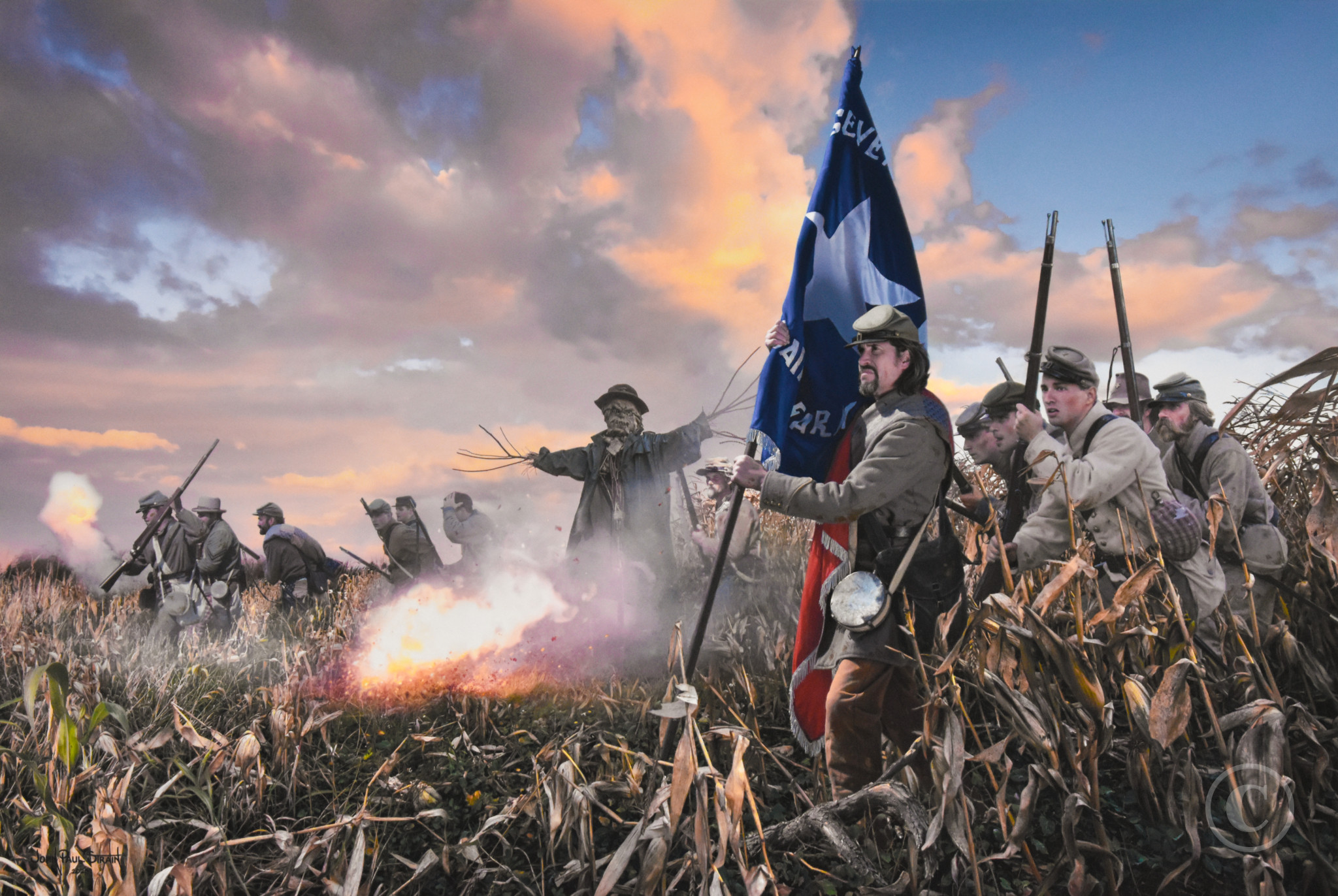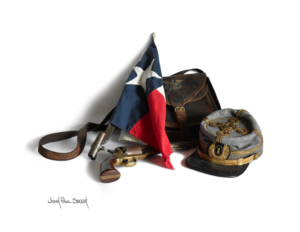FIRST TEXAS AT ANTIETAMFirst Texas Infantry Regiment - Hood’s DivisionBattle of Antietam - September 17, 1862 
General Robert E. Lee and his Army of Northern Virginia invaded Maryland in September 1862 with the intentions of changing the focus of battle away from the South and into the Federal’s own backyard. Victories there, could lead to the capture of Washington, D.C. and the start of negotiations to end the war. General Lee found good ground to defend in southern Maryland near Antietam Creek and ordered his Army of Northern Virginia to converge there. The location was about a mile east of the little town of Sharpsburg. The Antietam Creek winds through the countryside and was swift and deep, crossable only at three stone bridges, making the position defensible from enemy flanking maneuvers. On September the 15th with Federal forces closing in from the east, Lee positioned his men near the creek and waited for McClellan to arrive. On the afternoon of 16th the Army of the Potomac arrived and engagements soon began, continuing until the evening. But this clash between the two armies was just the beginning of what would become the deadliest one-day battle in American military history. Scattered rain showers and anxiety kept many men from sleeping during the night. Clouds lingered at first light as cannon fire erupted before sunrise. General Hood’s Texas Brigade began to fix breakfast as the epic Battle of Antietam began when Hooker’s Union corps mounted a powerful assault on Lee’s far left flank against the Texans. The moment the 1st Texas stepped into the husks of corn they received cannon fire from Battery C of the 5th US Artillery, posted atop the ridge overlooking the Cornfield from the north. Undeterred the Texans pushed deeper into the corn cornfield in a line of battle as men in the ranks now fell from musket fire. A soldier from the 4th Texas Regiment would later write “When we reached the top of the hill, (it)was the hottest place I ever saw on this earth or want to see hereafter. There were shot, shells, and Minie balls sweeping the face of the earth; legs, arms, and other parts of human bodies were flying in the air like straw in a whirlwind. The dogs of war were loose, and havoc was their cry.” Despite the fire it seemed the Lone Star soldiers were unstoppable in their charge through the cornfield, driving Federal units before them. However in their excitement, the 1st Texas had moved ahead from the line of battle chasing after the fleeing enemy, moving farther and farther from their appointed post next to the 18th Georgia. Lieutenant Colonel Work and his officers had lost control of the 1st regiment. In his account published in the Official Records, Colonel Work explained that “[a]s soon as the regiment became engaged with the enemy in the corn-field, it became impossible to restrain the men, and they rushed forward, pressing the enemy…” As the 1st Texas reached the end of the corn field, suddenly rising from an unseen prone position, Meade’s 12th Pennsylvania Reserves poured a solid wall of fire into the advancing Texans, followed by another volley from the awaiting 11th Reserves, and then another from the 9th Reserves. The result was devastating. Those Texans still standing tried to hold their position. In just a few minutes eight men were killed holding the regimental colors. Each time a color bearer was shot to the ground another Texan would pick up their flag. But soon the men retreated from the unrelenting firestorm leaving their Texas battle flag underneath the body of its last bearer. Eventually all of Hood’s Brigade were forced to withdraw. Only 56 soldiers of the 226 men of the 1st Texas Regiment who marched into the Miller’s cornfield survived. The unit suffered over 82% casualties on that field, more than any other regiment North or South, during the entire war. The Texas battle flag carried that day was eventually returned to the State of Texas in 1909, and hung with honor in the Texas State Capitol building until the 1920's. Despite these tremendous losses at Antietam, the men of the 1st Texas would fight on at Fredericksburg, Gettysburg, Chickamauga, Spotsylvania Court House, Cold Harbor, and the Petersburg siege. They would become known as “The Ragged Old First”. Archival Paper Giclées
Canvas Giclées
|


